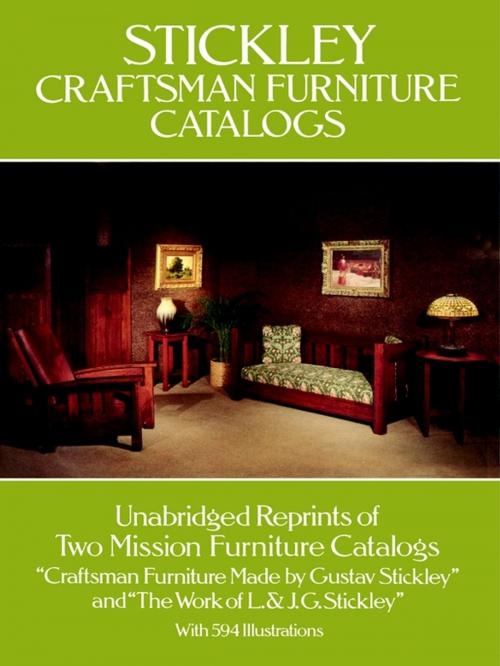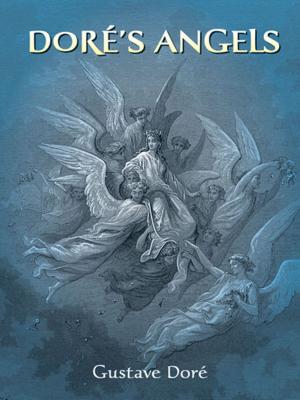| Author: | Gustav Stickley, L. & J. G. Stickley | ISBN: | 9780486157740 |
| Publisher: | Dover Publications | Publication: | June 22, 2012 |
| Imprint: | Dover Publications | Language: | English |
| Author: | Gustav Stickley, L. & J. G. Stickley |
| ISBN: | 9780486157740 |
| Publisher: | Dover Publications |
| Publication: | June 22, 2012 |
| Imprint: | Dover Publications |
| Language: | English |
Directly influenced by William Morris' Arts and Crafts Movement in England, the Stickley family created what is now known and prized as Craftsman style furniture. This chastely beautiful and functional furniture was without superfluous or pretentious ornamentation, and it did not try to imitate any previous "period" style. Rather, it expressed the plain principle of honest construction and the sturdiness and beauty of the primary wood used, American white oak.
The contemporary antique collector can now see hundreds of pieces of Craftsman furniture as they were actually offered for sale in two Stickley catalogs — Craftsman Furniture Made by Gustav Stickley (1910) and The Work of L. & J. G. Stickley (n.d.). The 594 illustrations show numerous settees, rockers, armchairs, reclining chairs, bookcases, desks, and tables — tea, round, rectangular, library, lunch, dining, serving, sewing, toilet, dressing, folding, child's and others, even a billiard table and checkerboard table. A large number of other furniture pieces are also presented, including magazine cabinets, stools, plant stands, chests, sideboards, chests of drawers, beds, child's rockers and dressers, screens, Davenport bed, etc.
In addition, there are pages devoted to products not automatically associated with the Stickleys or Craftsman furniture: metalwork — desk set, vase, chafing dish, cider set, candle stick, portieres, pillows, curtains, table covers, etc.; willow furniture — two settees and nine chairs; and rugs in four different patterns. All of the illustrations are accompanied by identifying captions, including exact measurements and, often, prices or descriptive information.
Directly influenced by William Morris' Arts and Crafts Movement in England, the Stickley family created what is now known and prized as Craftsman style furniture. This chastely beautiful and functional furniture was without superfluous or pretentious ornamentation, and it did not try to imitate any previous "period" style. Rather, it expressed the plain principle of honest construction and the sturdiness and beauty of the primary wood used, American white oak.
The contemporary antique collector can now see hundreds of pieces of Craftsman furniture as they were actually offered for sale in two Stickley catalogs — Craftsman Furniture Made by Gustav Stickley (1910) and The Work of L. & J. G. Stickley (n.d.). The 594 illustrations show numerous settees, rockers, armchairs, reclining chairs, bookcases, desks, and tables — tea, round, rectangular, library, lunch, dining, serving, sewing, toilet, dressing, folding, child's and others, even a billiard table and checkerboard table. A large number of other furniture pieces are also presented, including magazine cabinets, stools, plant stands, chests, sideboards, chests of drawers, beds, child's rockers and dressers, screens, Davenport bed, etc.
In addition, there are pages devoted to products not automatically associated with the Stickleys or Craftsman furniture: metalwork — desk set, vase, chafing dish, cider set, candle stick, portieres, pillows, curtains, table covers, etc.; willow furniture — two settees and nine chairs; and rugs in four different patterns. All of the illustrations are accompanied by identifying captions, including exact measurements and, often, prices or descriptive information.















